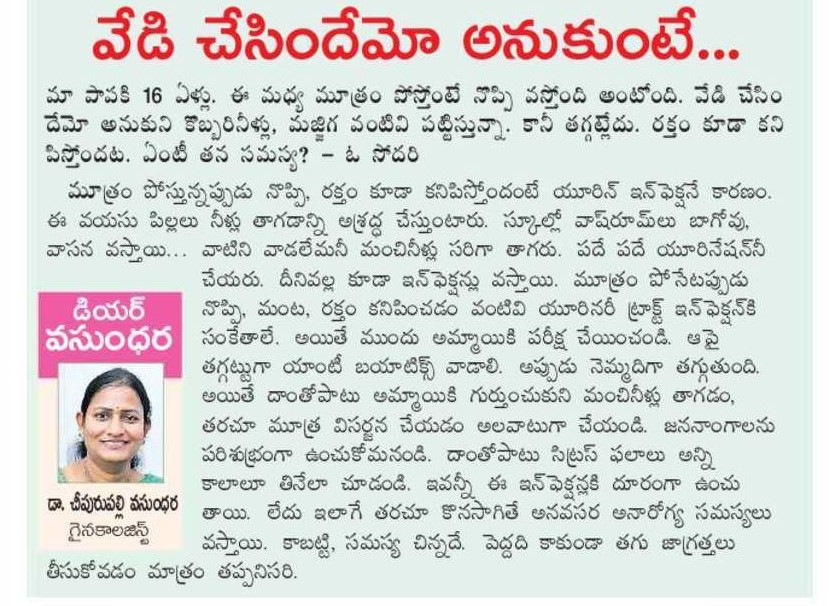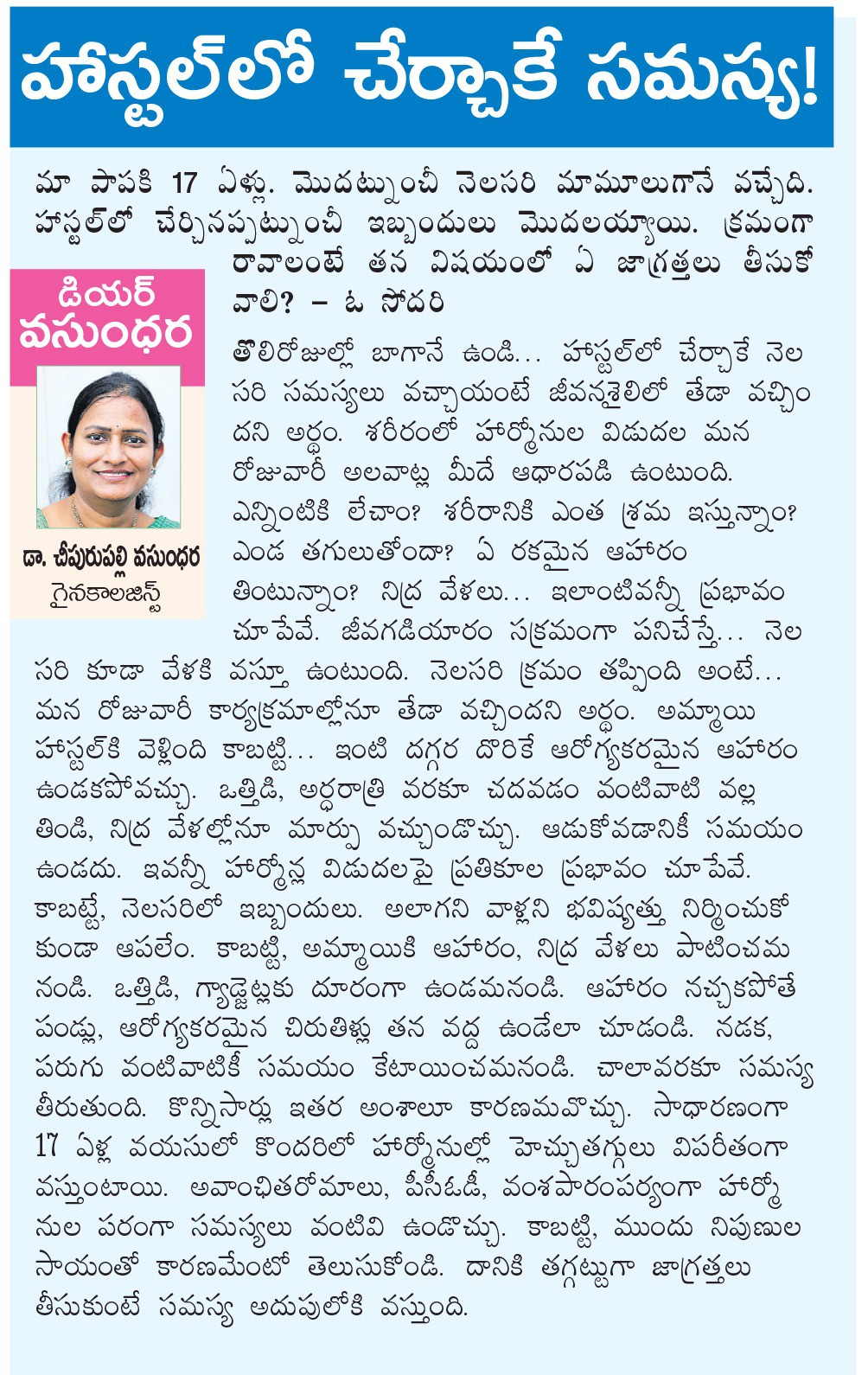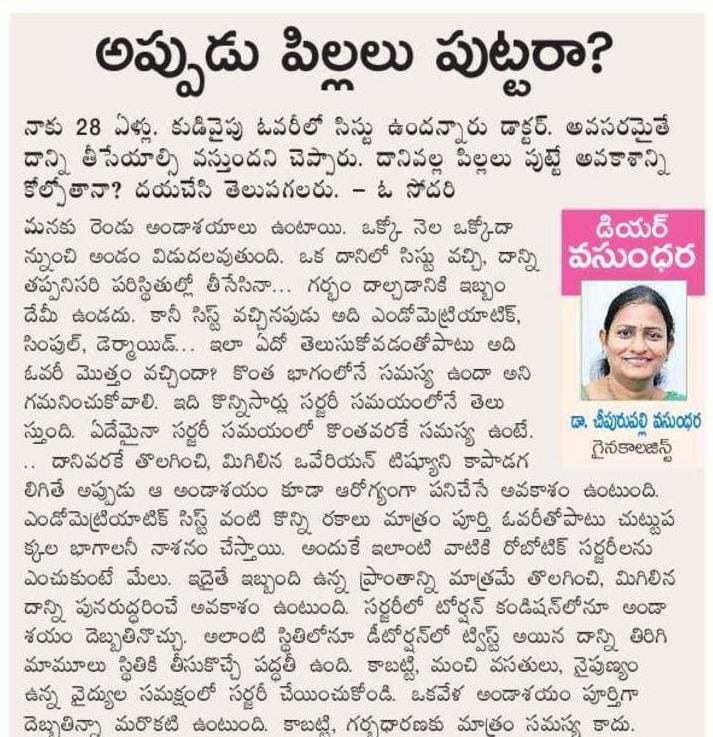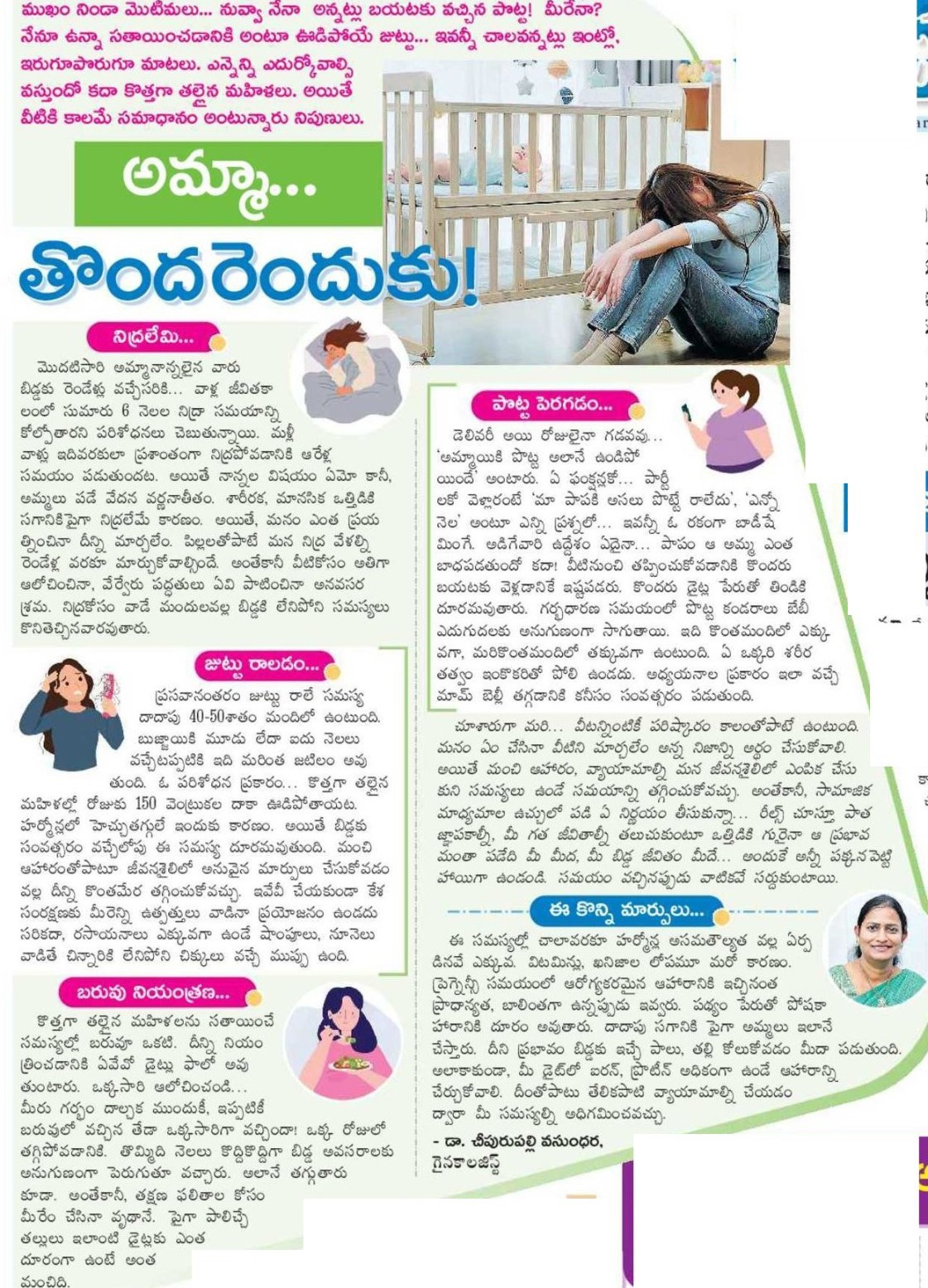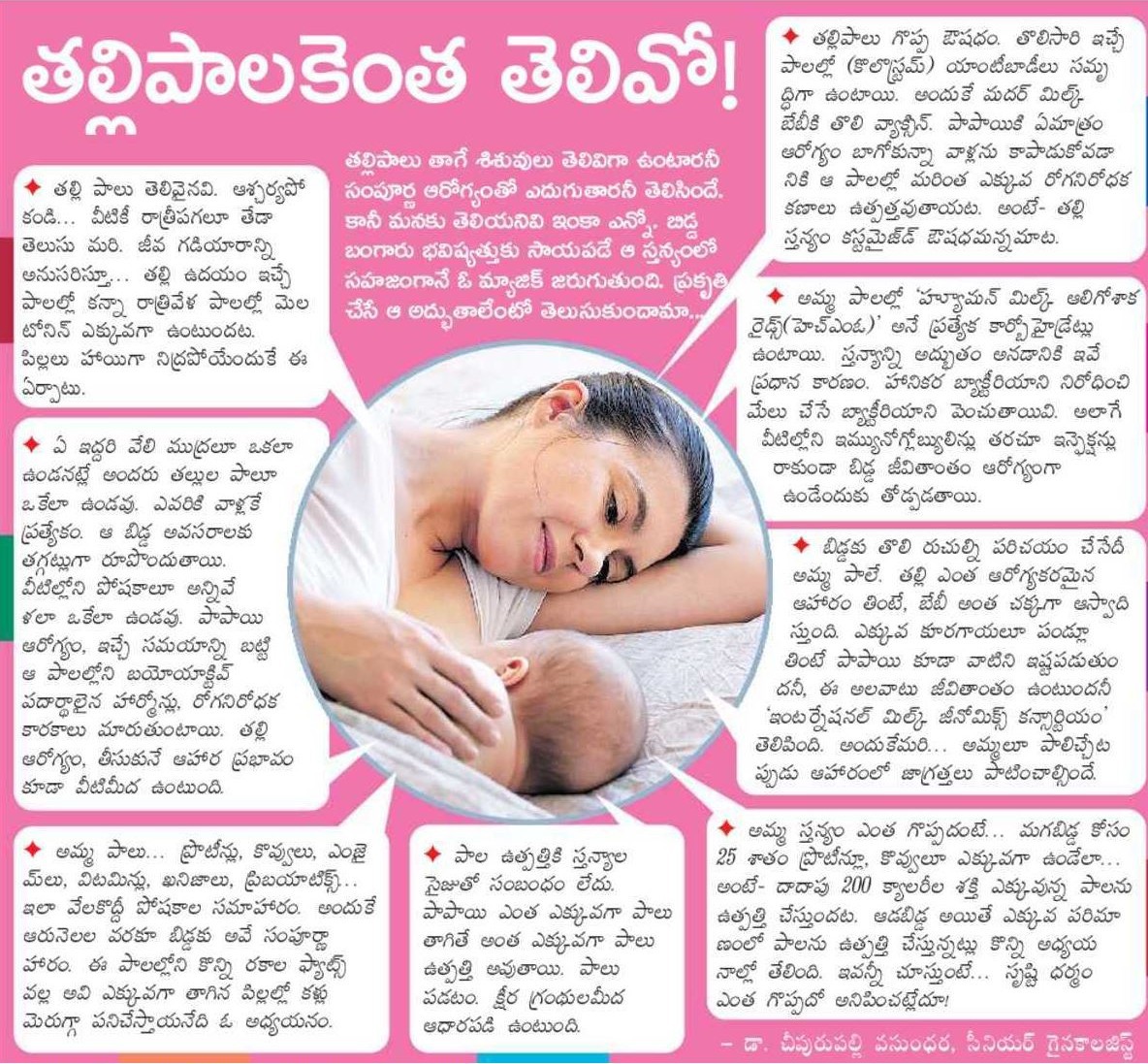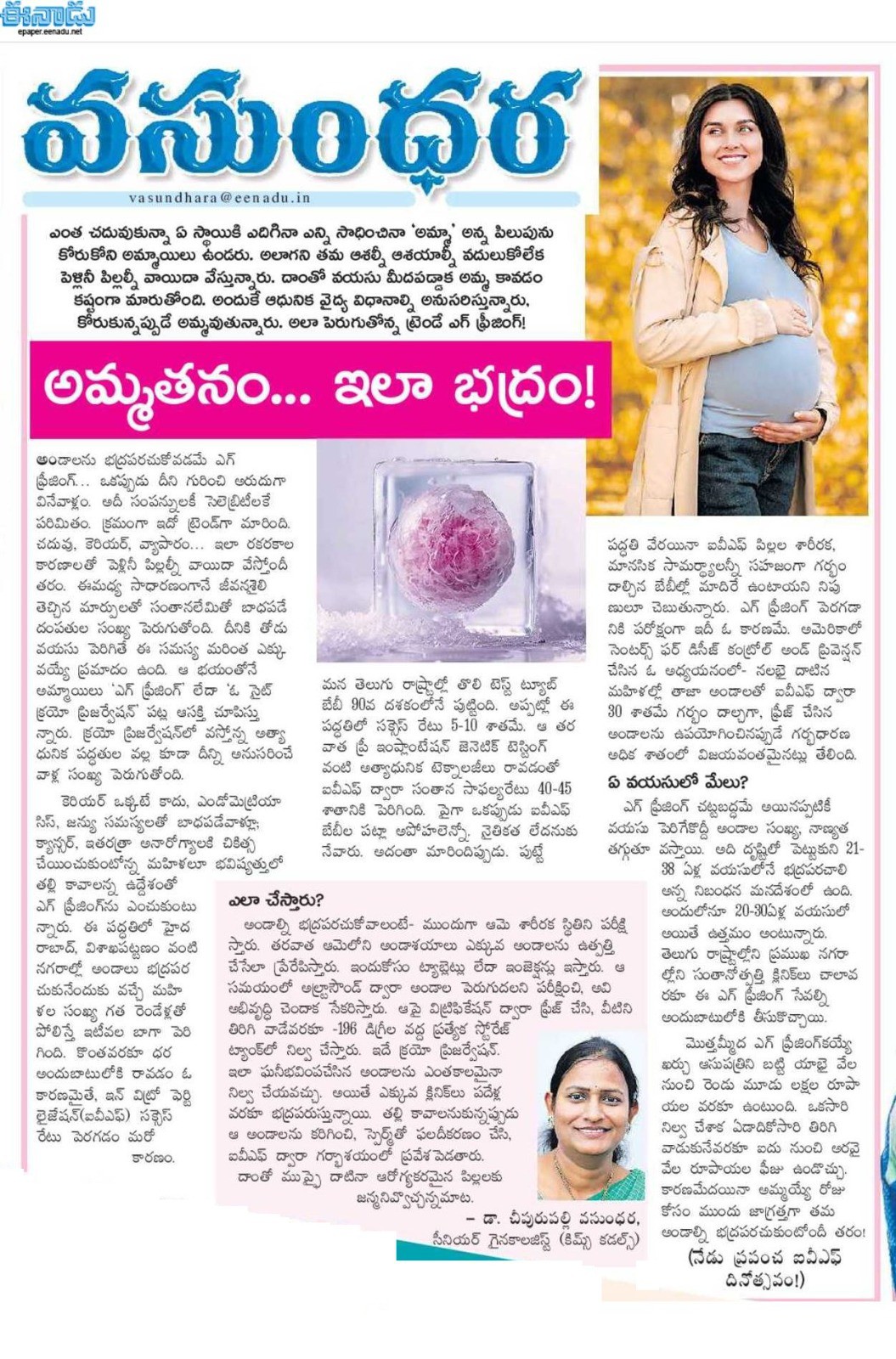- Paediatric Services
- Vaccination
- PICU
- Pediatric Surgery
- Paediatric Urology
- Paediatric Neurology & Neurosurgery
- Paediatric Hemato-Oncology & BMT
- Paediatric Pulmonology
- Paediatric Cardiology & Cardiac Surgery
- Pediatric Orthopaedics
- Paediatric Opthalmology
- Paediatric Endocrinology
- Paediatric Nephrology
- Paediatric Gastroenterology & Hepatology
- Paediatric ENT
- Paediatric Dentistry
- Book Appointment
- Home
- /Secunderabad
- /Hi-Risk Pregnancy
Hi-Risk Pregnancy
SERVICES WE PROVIDE
Bringing a new life to an existence is one of the most precious moments of any parent’s life. At KIMS Cuddles, we strive to make those precious moments of a mother even more memorable and cherishing through our services.

Diagnosis Of Pre-Existing Diseases
Pre-existing diseases are not directly related to the pregnancy but can cause risk during the pregnancy. We have state of the art facilities for diagnosing and treating them....
Read More...

Health Consultation
Our expert consultants help you understand the requirements of your body before you decide to conceive. We take into consideration the lifestyle differences of our patients and we ...
Read More...

Pregnancy Care
Our obstetric experts take care of the mother and baby during the pregnancy throughout the trimesters to ensure a healthy delivery. We won’t let you forget any of your check-up and...
Read More...

Understanding Signs Of Labor And Preparing For Labor
Labor is a telltale sign that baby is coming. So, it is imperative to prepare for labor as it is much more than just packing your hospital bag. Our expert will tell you what all st...
Read More...
Doctors

Dr. Vasundara Cheepurupalli
Senior Consultant Gynaecologist, Robotic and Laparoscopic Surgeon, Cosmetic Gynaecologist and Obstetrician

Dr. G. Usha Ravi
Consultant Obstetrician & Gynaecologist

Dr. M. Madhavi
Consultant Obstetrician, Gynaecologist, Laparoscopic Surgeon & Infertility Specialist

Dr. Sindhura Vaddamani
Consultant Obstetrician & Gynaecologist, Specialist in High-Risk Obstetrics & Maternal Medicine

Dr. Veena Sravanthi T
Consultant Neonatologist

Dr. G. Ridhima
Consultant Neonatologist

Patient Testimonials
Mrs. Divya Bhavani
Mrs. G. Swathi
Mrs. Niharika B
Mrs. Anam Afsar
Mrs. Anagha
Mrs. G. Sravani
Mrs. Sandhya
Mrs. B. Priyanka
Mrs. Priyanka
Mrs. Anjali
Doctor Videos
Dr. Vasundara Cheepurupalli, Colposcopy, Fitness & Care, Gynaecology Services, Hi-Risk Pregnancy, Hysteroscopy, Laparoscopy Procedures, Maternity services, Obstetrics, Painless Delivery, PCOD Specialty centre, VBAC, Woman Health Services
Dr. Sindhura Vaddamani, 9 Months Full Term Care, Antenatal Care, Gynaecology Services, Hi-Risk Pregnancy, Maternity services, Obstetrics, Painless Delivery, Pregnancy Nutrition, VBAC, Woman Health Services
Dr. G. Nikila Reddy, Gynaecology Services, Hi-Risk Pregnancy, Maternity services, Obstetrics, Painless Delivery, Postnatal care, Pregnancy Nutrition, VBAC, Woman Health Services
Dr. Vasundara Cheepurupalli, 9 Months Full Term Care, Antenatal Care, Colposcopy, Fertility Services, Fitness & Care, Gynaecology Services, Hi-Risk Pregnancy, Laparoscopy Procedures, Maternity services, Obstetrics, Painless Delivery, PCOD Specialty centre, VBAC, Woman Health Services
Dr. Vasundara Cheepurupalli, 9 Months Full Term Care, Antenatal Care, Fertility Services, Fitness & Care, Gynaecology Services, Hi-Risk Pregnancy, Maternity services, Obstetrics, Painless Delivery, Preconception, Pregnancy Nutrition, VBAC, Woman Health Services
Dr. Vasundara Cheepurupalli, 9 Months Full Term Care, Fertility Services, Fitness & Care, Gynaecology Services, Hi-Risk Pregnancy, Lactation, Lactation Support Services, Maternity services, Obstetrics, Painless Delivery, Postnatal care, Preconception, Pregnancy Nutrition, VBAC, Woman Health Services
Dr. Vasundara Cheepurupalli, 9 Months Full Term Care, Antenatal Care, Fertility Services, Fitness & Care, Gynaecology Services, Hi-Risk Pregnancy, Maternity services, Obstetrics, Painless Delivery, Pregnancy Nutrition, VBAC, Woman Health Services
Dr. Vasundara Cheepurupalli, 9 Months Full Term Care, Antenatal Care, Fertility Services, Fitness & Care, Gynaecology Services, Hi-Risk Pregnancy, Maternity services, Obstetrics, Painless Delivery, Pregnancy Nutrition, VBAC, Woman Health Services
Dr. Vasundara Cheepurupalli, 9 Months Full Term Care, Antenatal Care, Fertility Services, Fitness & Care, Gynaecology Services, Hi-Risk Pregnancy, Maternity services, Obstetrics, Painless Delivery, Pregnancy Nutrition, VBAC, Woman Health Services
Health Blogs

27 August, 2024
Natural vs Epidural Birth
Authored By:
Understanding Your Pain Management OptionsExpectant moms must make an important decision when it comes to pain management during labor. Understanding the differences between natural and epidural delivery options will allow you to make an informed selection based on your preferences and medical requirements.Natural Birth: Embracing the Body's ProcessWhat is Natural Birth?Natural delivery is the process of giving birth without the use of pain relievers or medical treatments. This method emphasizes allowing the body to progress naturally through labor and delivery, frequently including strategies such as breathing exercises, relaxation and varied positions to manage discomfort.Benefits of Natural BirthGreater Control: Many women feel more in control of their labor and delivery experience during a natural birth.Shorter Recovery Time: Without the effects of anesthesia, recovery can be quicker and the mother can be more alert and mobile immediately after birth.No Drug Side Effects: Avoiding pain medication reduces the risk of drug-related side effects for both the mother and baby.Considerations for Natural BirthPain Management: While some women manage pain effectively using natural techniques, others may find the pain overwhelming.Physical Demands: Natural birth requires endurance and resilience, which may be challenging for some women.Epidural Birth: Pain Relief with Medical AssistanceWhat is an Epidural?An epidural is a type of localized anesthesia administered by a catheter inserted in the lower back. It numbs the lower region of the body, resulting in significant pain relief during birth.Benefits of an EpiduralEffective Pain Relief: Epidurals are highly effective at managing pain, allowing the mother to remain comfortable during labor.Flexibility: An epidural can be adjusted or stopped as needed, providing customizable pain relief.Conservation of Energy: By reducing pain, an epidural can help the mother conserve energy for the pushing stage of labor.Considerations for an EpiduralPotential Side Effects: Common adverse effects include decreased blood pressure, headaches and backaches. In rare circumstances, more significant consequences may arise.Limited Mobility: An epidural typically requires the mother to remain in bed, as movement and walking are restricted.Timing and Availability: Epidurals are usually administered once labor is well established and may not be available if labor progresses too quickly.Making the Right Choice for YouChoosing between natural and epidural birth depends on your pain tolerance, health status and personal preferences. Here are some tips to help you decide:Educate Yourself: Attend childbirth education classes and discuss pain management options with your healthcare provider.Consider Your Preferences: Think about your comfort level with pain and medical interventions.Plan Flexibly: Birth plans can change due to unforeseen circumstances, so it's important to remain open to different pain management options.Final ThoughtsBoth natural and epidural deliveries have their pros and cons. The best option is the one that meets your unique needs and medical condition. Discuss your options with your doctors and create a birth plan that prioritizes your comfort and the safety of both you and your baby.Whether you opt for natural or epidural birth, the ultimate goal is to have a healthy and joyful birth experience. Take this journey with confidence, knowing you've made the best option for yourself and your developing family.

15 April, 2021
High Risk Pregnancy
Authored By: Dr. K. Shilpi Reddy
A pregnancy is a high-risk when there are potential complications that could affect the mother, the baby, or both. High-risk pregnancies require management by a specialist to ensure the best outcome for the mother and baby. Risk Factors Sometimes a high-risk pregnancy is due to a medical condition present before pregnancy. In other cases, a medical condition that develops during pregnancy causes a pregnancy to become high risk. Maternal Age One of the commonest risk factors is the age of the mother-to-be. Women who will be under age 17 or over age 35 are at greater risk. The risk of miscarriage and genetic defects increases further after age 40. Pre Existing Medical conditions Conditions such as high blood pressure; lung, kidney, or heart problems; diabetes; autoimmune disease; sexually transmitted diseases (STDs); or chronic infections such as human immunodeficiency virus (HIV) can be risky for the mother and/or their unborn baby. Previous history of miscarriage, problems with a previous pregnancy or pregnancies, or a family history of genetic disorders are also risk factors for a high-risk pregnancy. Medical conditions that occur during pregnancy Two of the more common pregnancy-related problems are: Preeclampsia is a syndrome that includes high blood pressure, urinary protein, and swelling; it can be dangerous or even fatal for the mother or baby if not treated. With proper management, most women who develop preeclampsia have healthy babies. Gestational diabetes is when diabetes develops during pregnancy. Women with gestational diabetes may have healthy pregnancies and babies the treatment plan is been followed. Usually the diabetes resolves after delivery. Women with gestational diabetes are at increased risk of developing type 2 diabetes. Pregnancy-related issues. Often a pregnancy is high risk because of issues that arise from the pregnancy itself and that have little to do with the mother’s health. These include: Premature labor is labor that begins before 37 weeks of pregnancy. Factors that place women at higher risk for Preterm labor- such as certain infections, a shortened cervix, or previous preterm birth. Multiple births means carrying more than one baby. Multiple pregnancies, are more common as women are using more infertility treatments, increase the risk of premature labor, gestational diabetes, and pregnancy-induced high blood pressure. Placenta previa is a condition in which the placenta covers the cervix. The condition can cause bleeding, especially if a woman has contractions. Fetal problems Approximately 2% to 3% of all babies have a minor or major structural problem in development. Prevention Schedule a preconception appointment. Before palnning for Pregnancy- start taking a daily prenatal vitamin with folic acid and reach a healthy weight. If you have a medical condition, treatment might be adjusted in preparation for pregnancy. Discuss all risk factors related to a genetic condition. Seek regular prenatal care. Prenatal visits can help your health care provider monitor your health and your baby’s health. You might require a specialist in maternal-fetal medicine, genetics, pediatrics or other areas. Avoid risky substances. If you smoke, quit. Alcohol and illegal drugs are off-limits. Getting proper immunizations Getting regular physical activity, unless advised otherwise by your doctor Investigation Specialized or targeted ultrasound might be required depending on condition. This is an imaging technique that uses high-frequency sound waves to produce images of a baby in the uterus — targets a suspected problem, such as abnormal development. Prenatal cell-free DNA (cfDNA) screening-DNA from the mother and fetus is extracted from a maternal blood sample and the fetal DNA is screened for the increased chance of specific chromosome problems. Invasive genetic screening. Amniocentesis or chorionic villus sampling (CVS). In amniocentesis, a sample of the fluid that surrounds and protects a baby during pregnancy (amniotic fluid) is withdrawn from the uterus. Usually done after week 15 of pregnancy, amniocentesis can identify certain genetic conditions as well as serious abnormalities of the brain or spinal cord (neural tube defects). During CVS, a sample of cells is removed from the placenta. Mainly done between weeks 10 and 12 of pregnancy, CVS can identify certain genetic conditions. Ultrasound for cervical length to determine if you’re at risk of preterm labor. Lab tests. Test your urine for urinary tract infections and screening for infectious diseases such as HIV and syphilis. Biophysical profile. This prenatal ultrasound is used to check on a baby’s well-being. It might include only an ultrasound to evaluate fetal well-being or, depending on the results of the ultrasound, also fetal heart rate monitoring (nonstress test). Some prenatal diagnostic tests — such as amniocentesis and chorionic villus sampling — carry a small risk of pregnancy loss.Discuss the risks and benefits with your Doctor. Red Flag signs Contact your Doctor immediately if – Vaginal bleeding or watery vaginal discharge Severe headaches Pain or cramping in the lower abdomen Decreased fetal activity Pain or burning with urination Changes in vision, including blurred vision Sudden or severe swelling in the face, hands or fingers Fever or chills Vomiting or persistent nausea Dizziness Thoughts of harming yourself or your baby

03 June, 2019
Signs and Symptoms of Preterm Labor
Authored By:
Premature labor, also called preterm labor, is when your body starts getting ready for birth much earlier than your due date. Usually, it refers to labor that happens around week 37 of your pregnancy. Premature labor can lead to early birth. Your doctor can help you avoid an early delivery. Speak to your gynecologist to find out more or visit KIMS Cuddles and get the services of the best maternity hospital in Hyderabad. Here is what you should know about preterm labor. What Increases your risk There are many things that can increase your risk of premature labor. Here are some of them: Being overweight or underweight before pregnancy Not getting proper prenatal care Drinking alcohol, smoking or using drugs during pregnancy Having health issues such as high blood pressure, preeclampsia, diabetes, blood clotting disorders, or infections Being pregnant with a baby who has certain birth defects Being pregnant with a baby from in vitro fertilization Being pregnant with twins or multiples Family or personal history of premature labor Getting pregnant too soon after having a baby Signs and Symptoms of Preterm Labor Knowing more about the signs of a condition can help you realize if there is a problem and take precautions right in time. If you have any of these signs or symptoms before 37 weeks of pregnancy, you may be having preterm labor: Backache: If you feel pain in your lower back, it may indicate preterm labor. This ache may be constant or may come and go, but it won’t ease even if you change positions or do something else for comfort. Contractions: If you feel contractions every 10 minutes or more, you may be experiencing preterm labor. Cramping: If you experience cramping in your lower abdomen or menstrual-like cramps, you may be experiencing preterm labor. These can often feel like gas pains that may come with diarrhea. Leaking vagina: Fluid leaking from your vagina is yet another symptom of preterm labor. Flu-like Symptoms: Symptoms associated with flu, such as nausea, vomiting, or diarrhea can also indicate preterm labor. Talk to your doctor even if you have mild cases of the same. If you can’t keep down liquids for more than 8 hours, see your doctor immediately. Increased pressure: If you start feeling pressure in your pelvis or vagina, it may indicate preterm labor. Vaginal bleeding: Even light vaginal bleeding is an indicator of preterm labor. While some of these may seem like normal pregnancy symptoms, such as backache or vaginal discharge, you must get yourself checked out if you notice any of these. Go to a good maternity hospital in Hyderabad such as KIMS Cuddles and see their team of doctors who will suggest the right steps to take. What to do in case of Preterm Labor If you notice even one of these signs or symptoms of preterm labor, see your doctor immediately. Getting help quickly is the best thing you can do for you and your baby. When you see your doctor, they may want to do a thorough check up including a pelvic exam or transvaginal ultrasound. This allows them to see if your cervix has started to thin out and open for labor. Your cervix is the opening to the uterus or womb that sits at the top of the vagina or the birth canal. A transvaginal ultrasound is done in the vagina instead of on the outside on your belly. Just like a regular ultrasound, it uses sound waves and a computer to make a picture of your baby. If you’re having contractions, your doctor will monitor them to see how strong and far apart they are. Apart from this your doctor will: Ask about your medical history, including medicines you’ve been taking during pregnancy. Check your pulse, blood pressure, and temperature. Treatment for Preterm Labor If you’re having preterm labor, your doctor may give you appropriate treatment to help stop it or to improve your baby’s health before birth. Talk to your doctor about the right treatment for you. This may include: IV fluids Medicine to relax your uterus and stop labor Medicine to speed up the development of your baby’s lings Antibiotics Hospital admission If your labor has kept up and can’t be stopped, your doctor will start making preparations to deliver your baby. Keep calm and rely on the advice of your doctor as they will take the best decision for you. KIMS Cuddles is a top maternity hospital in Hyderabad with an experienced team of doctors to help you throughout your pregnancy journey. Premature Baby’s Health Contrary to popular belief, premature babies grow up to be normal adults. About one in 10 babies born in the U.S. are preemies. Most preemies catch up to their full-term peers in time. However, these kids have a higher risk of problems. Premature babies grow more slowly than babies born at full-term. They may also have a higher risk of certain long-term health problems such as autism, intellectual disabilities, cerebral palsy, lung problems, and vision and hearing loss. Babies born after 7 months usually need a short stay in the hospital’s neonatal intensive care unit (NICU). Babies born earlier than that face much bigger risks. They will need specialized care in the NICU. Rest assured, if you choose KIMS Cuddles, you will be at the best maternity hospital in Hyderabad and receive the best care from our experienced team. Visit us to get the right treatment and care during and beyond your pregnancy. *Information shared here is for general purpose Please take doctors’ advice before taking any decision.

05 April, 2017
Planning for motherhood after forty? Things you must know about elderly pregnancy!
Authored By:
Pregnancy and motherhood can be the most significant and life-altering events in a woman’s life. However, according to statistics, motherhood doesn’t begin until after the 30s for highly educated women working. It is said that a woman’s biological clock starts ticking as she gets older. But, with the availability of several procedures like freezing, the risk of infertility in ‘delayed’ or ‘elderly’ pregnancy is significantly reduced. Let’s look at some of the risk factors and complications of an elderly pregnancy, as well as tips to breeze through it: Have a Healthy Lifestyle An active, healthy lifestyle helps in keeping the body fit and ready for pregnancy after 40. Eating right, and getting enough vitamins and minerals is essential to avoid a condition called spina bifida in the child, where the spinal cord fails to close during foetal development. Get Regular Check-Ups To increase your chances of a healthy pregnancy after 40, make sure to schedule regular check-ups with your doctor. Also, work closely with them to keep any existing health condition like diabetes, under check. Change your diet At age 40 plus, your body requires a daily dose of whole grains, fruits and vegetables in your diet. These are rich in folic acid which is essential for the baby’s development. A balanced diet includes foods like spinach, kale and other leafy vegetables, and proteins. Avoid Alcohol While the effects of alcohol on early pregnancy are still pretty ambiguous, pregnant mothers over the age of 40 years should avoid alcohol altogether. Research by the American Academy of Pediatrics has found that alcohol can contribute to the chances of miscarriage in delayed or high-risk pregnancies. Quit Smoking According to Centers for Disease Control and Prevention, smoking makes it harder for women to get pregnant as it causes eggs to deplete in quantity and quality. It is also known to cause several abnormalities and birth defects in babies. Check for Chromosome abnormalities Women who try for pregnancy over the age of 40 carry a higher risk of chromosome abnormalities. There are definitive tests, such as amnio or chorionic villus sampling (CVS), which involve the analysis of tissue from the placenta, for the presence of anomalies. It would be prudent to work with your gynaecologist to get all the appropriate tests done during pregnancy. Multiple Pregnancy or Twins A woman in her 40s is approaching menopause. Therefore, if you’re trying to get pregnant at this age, you are more likely to carry twins or multiples. Older women have higher levels of FSH (follicle-stimulating hormone) and are more likely to prepare more than one egg per menstrual cycle. Ultrasound scanning can help detect and manage multiple pregnancies. Gestational Diabetes and Hypertension Late pregnancy has a direct correlation to the incidence of conditions like hypertension (high blood pressure) and gestational diabetes. In case you are at risk, or already suffering, you might need to take insulin to keep your diabetes under control and adopt a new diet to manage hypertension. The risks for elderly pregnancy are very real – but not insurmountable. As an older mother, you are likely to be wiser, patient, and adaptable to changes around you. Women over the age of 40 also have a high degree of self-confidence that they carry into the doctor’s office and are very clear about their preferences regarding labour and delivery. At KIMS Cuddles, we are committed to minimizing your risks and ensuring a healthy elderly pregnancy. After all, it is never too late. *The opinions expressed in this article are not to be substituted for medical advice under any circumstance.

News & Events

